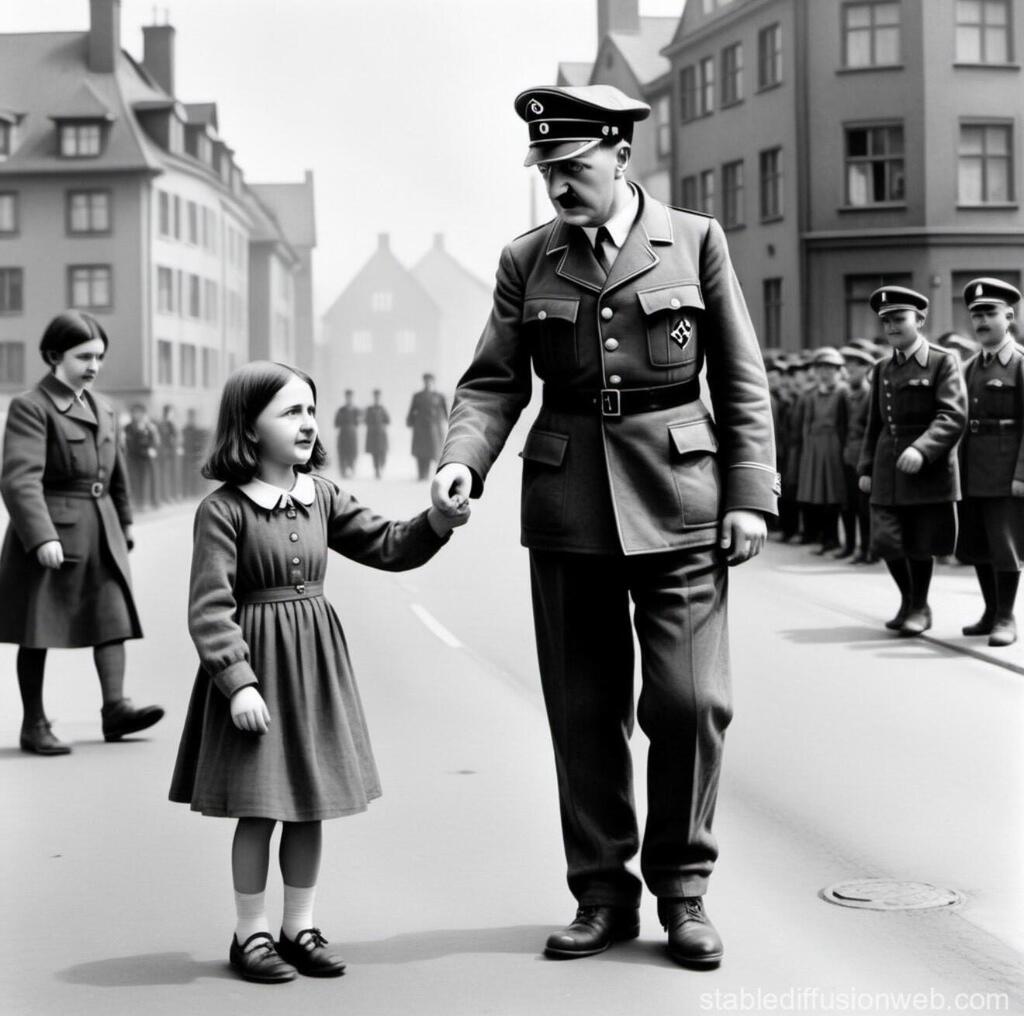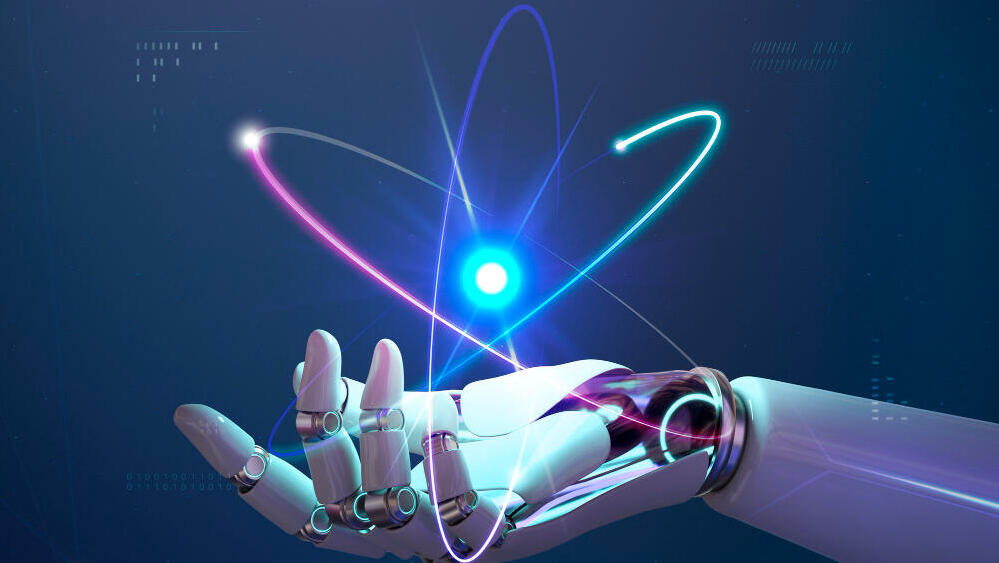Getting your Trinity Audio player ready...
A short clip of Anne Frank, showing her peering briefly from a window in her Amsterdam home, has garnered over six million views on YouTube. It’s the only known authentic footage of her — six million views for a few seconds of history.
One can only imagine what the teenage diarist, murdered at the Bergen-Belsen concentration camp 78 years ago, would think of her unexpected return as a viral image — haunting TikTok timelines, staring out from countless Instagram stories, a ghost embedded in the modern algorithm.
The video’s popularity underscores a hunger for moving Holocaust documentation. Still photos no longer suffice. They leave viewers suspended in time, with no sense of what came before or after. Motion adds context. It fills in the gaps and brings the past closer.
Between reality and simulation
AI didn’t invent Anne Frank. She was real: a Jewish German-born teenager who fled to the Netherlands, spent two years in hiding, was betrayed and eventually died of typhus in a concentration camp.
She wrote in her diary, "In spite of everything, I still believe that people are really good at heart." Her diary and the Anne Frank House in Amsterdam remain pillars of Holocaust remembrance.
But the Anne Frank revived by AI isn’t her. It’s a programmed imitation — her face, gaze and voice reassembled by algorithms. The result is as captivating as it is disturbing: a digital likeness that stares back at us as though she survived. But she didn’t. That’s the dissonance at the heart of it.
The 'uncanny valley' of memory
This tension — between engaging representation and horror — lies at the heart of the debate over AI’s role in Holocaust memory. The effect is often unsettling, evoking the “uncanny valley,” the robotics concept describing discomfort caused by artificial humans that are almost — but not quite — lifelike. When the subject is genocide, that discomfort intensifies.
A past that feels present
At the same time, AI’s ability to recreate historical figures makes the past feel more immediate. Those once confined to grainy photos and fading testimonies now appear animated and nearly tangible. They move, speak, look us in the eye. The boundary between archive and emotion blurs, as does the line between living witness and digital simulation.
It's a technological breakthrough: giving names and faces to victims, voices to the disappeared. But it’s also a fraught space. The more realistic the representation, the easier it is to confuse fiction for fact. Memory and imagination begin to merge, with no clear sense of which is leading the other.
Holocaust memory has always evolved with technology — from handwritten diaries to film, from video testimony to social media. AI arrived just as the number of living survivors sharply declined. Now, we’re in a paradox: using powerful tools to preserve history, while risking its distortion.
Artificial memories
The reality is inescapable: Holocaust survivors are vanishing. A 2023 Ipsos survey of 311 Polish teenagers aged 16 to 18 found that 7% believe the Holocaust never happened and 11% had never heard of International Holocaust Remembrance Day.
In response, the Israeli nonprofit Chasdei Naomi launched the world’s first AI-generated Holocaust memory exhibit. Survivors shared personal stories, which AI platform Midjourney transformed into digital images.
One survivor recognized her mother’s face in a rendering based solely on a verbal description — a memory she'd carried for decades, suddenly made visible. Another spoke of her murdered younger sister, remembered only by a bloodstained coat. The image gave that coat a shape, turning grief into form. For the survivors, the images weren’t just pictures — they were pieces of life, restored.
“When we distribute food packages to impoverished Holocaust survivors,” a Chasdei Naomi spokesperson said, “they often tell us they’re afraid not just of hunger and cold — but that the memory of the Holocaust will disappear.”
Data and memory
At Yad Vashem, the need to preserve memory is central. Its “Book of Names” exhibit lists 4.8 million known Holocaust victims. The goal is to reach 5.1 million. The book contains no AI-generated images — only names, places and dates.
“AI helps us process more data, more efficiently,” said Michael Lieber, director of innovation and IT at Yad Vashem. “We can expand the biographical information of survivors and victims.” AI is mostly used for cataloguing and extracting data from video testimonies. “The model identifies people, places, events — even context,” Lieber said.
The dark side of AI
But while AI offers clear benefits — access, preservation, efficiency — its dangers are emerging fast. A search for “Holocaust” on generative AI platforms typically returns images of Auschwitz-Birkenau.
Between 60% to 80% of results come from that one camp. The wider Holocaust — its scope across Europe, the ghettos, massacres in Eastern forests and events in North Africa — is largely erased.
AI can create the illusion of memory without its depth. It might leave users feeling they “understand” the Holocaust, when in fact they've seen only a stylized reconstruction. This false sense of familiarity risks replacing history with simulation — and dulling its impact for future generations.
The politics of digital memory
AI-generated images now circulate on social media purporting to show the liberation of Auschwitz — though they're fabricated. Facebook pages gain followers by posting AI “photos” of historical figures and events. On TikTok, entire accounts are devoted to synthetic versions of Anne Frank.
The problem isn’t limited to bad actors. Big tech companies themselves offer little transparency about how their AI systems function. When false content is generated, there’s no clear explanation: was it due to biased data? A glitch? Or deliberate manipulation?
This isn’t just a lack of information — it’s a structural flaw. AI tools are trained on web content, which includes Holocaust denial, conspiracy theories and hate propaganda.
When asked about these concerns, tech companies often issue generic statements about their “commitment to historical truth” and “corporate responsibility.” But deeper questions — What safeguards are in place to stop misinformation? Who monitors content? Were Holocaust historians consulted? — usually go unanswered.
A dangerous new world of memory
Technology has opened a realm where fact and fiction increasingly blend. The only safeguard is vigilance — a conscious fight to protect the truth, out of respect for the dead.
The challenge is especially acute in education. For today’s youth, who’ve never met a survivor, the Holocaust can feel like ancient history. AI may offer engaging content but at the cost of historical depth.
The risk is real: a 13-year-old asking an AI chatbot about the Holocaust might receive a confident but incorrect answer. Who would correct it? Would their parents know? Would a teacher notice? Would anyone?
When everyone can create their own version of the Holocaust, tailored to their worldview, we enter dangerous territory.
A final call to action
To prevent a distorted legacy, careful curation is essential. First, AI developers, historians, museums and communities must collaborate urgently. Second, primary sources and testimonies need to be digitized responsibly. Third, digital literacy and critical thinking must become core parts of Holocaust education.
The memory of the Holocaust can't survive solely in monuments or viral clips. It must live in truth.
The author Italo Calvino once wrote: " The hell of the living is not something that will be. If there is one, it is what is already here, the hell we live in every day, that we make by being together. There are two ways to escape suffering it.
“The first is easy for many: accept the hell, and become such a part of it that you can no longer see it. The second is risky and demands constant vigilance and apprehension: seek and learn to recognize who and what, in the midst of hell, are not hell, then make them endure, give them space.”
 Keren Shahar
Keren ShaharPerhaps this is what we should expect from artificial intelligence: not only to remember what was, but to recognize what is not inferno within itself — and give it space.
Holocaust remembrance can't remain confined to memorials or digital videos. The Holocaust is a daily obligation to recognize the humanity in every person.
- Keren Shahar is a lecturer and expert in generative artificial intelligence.
Get the Ynetnews app on your smartphone: Google Play: https://bit.ly/4eJ37pE | Apple App Store: https://bit.ly/3ZL7iNv




